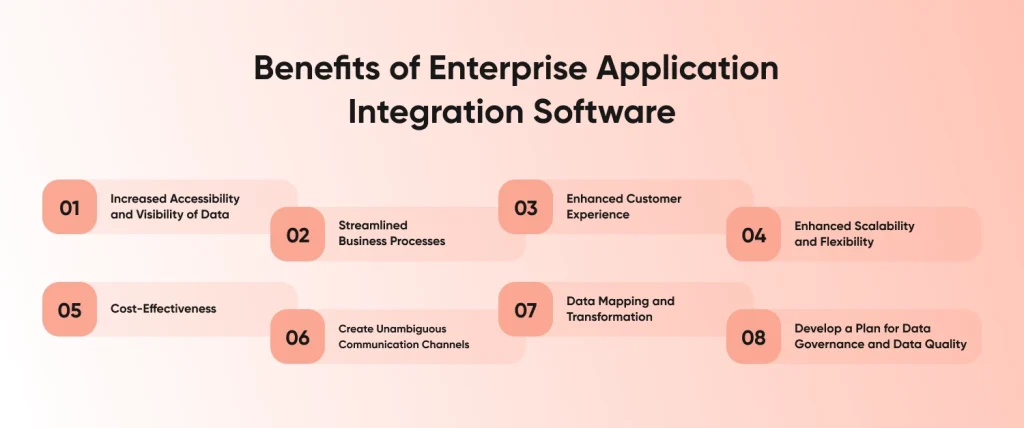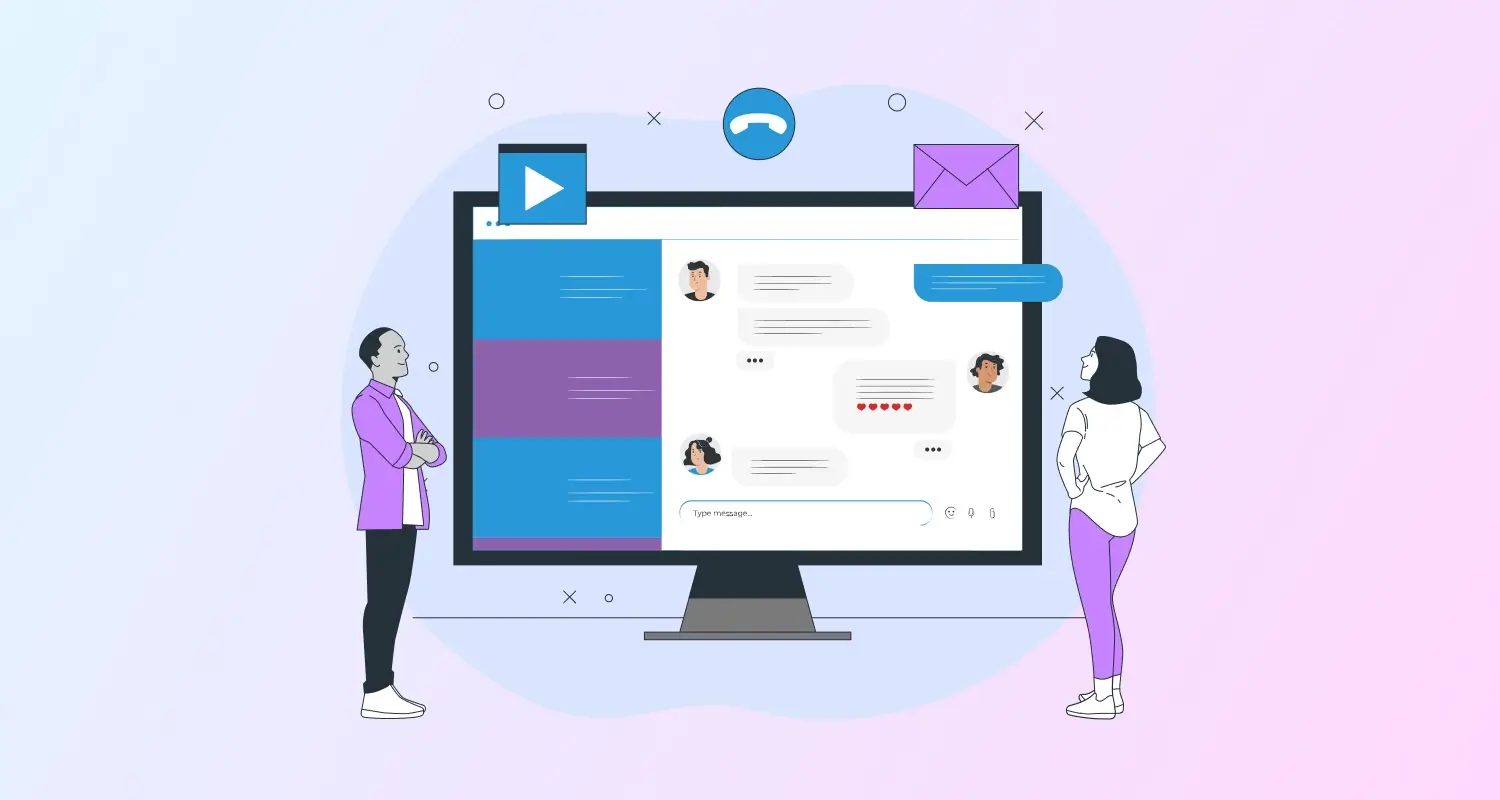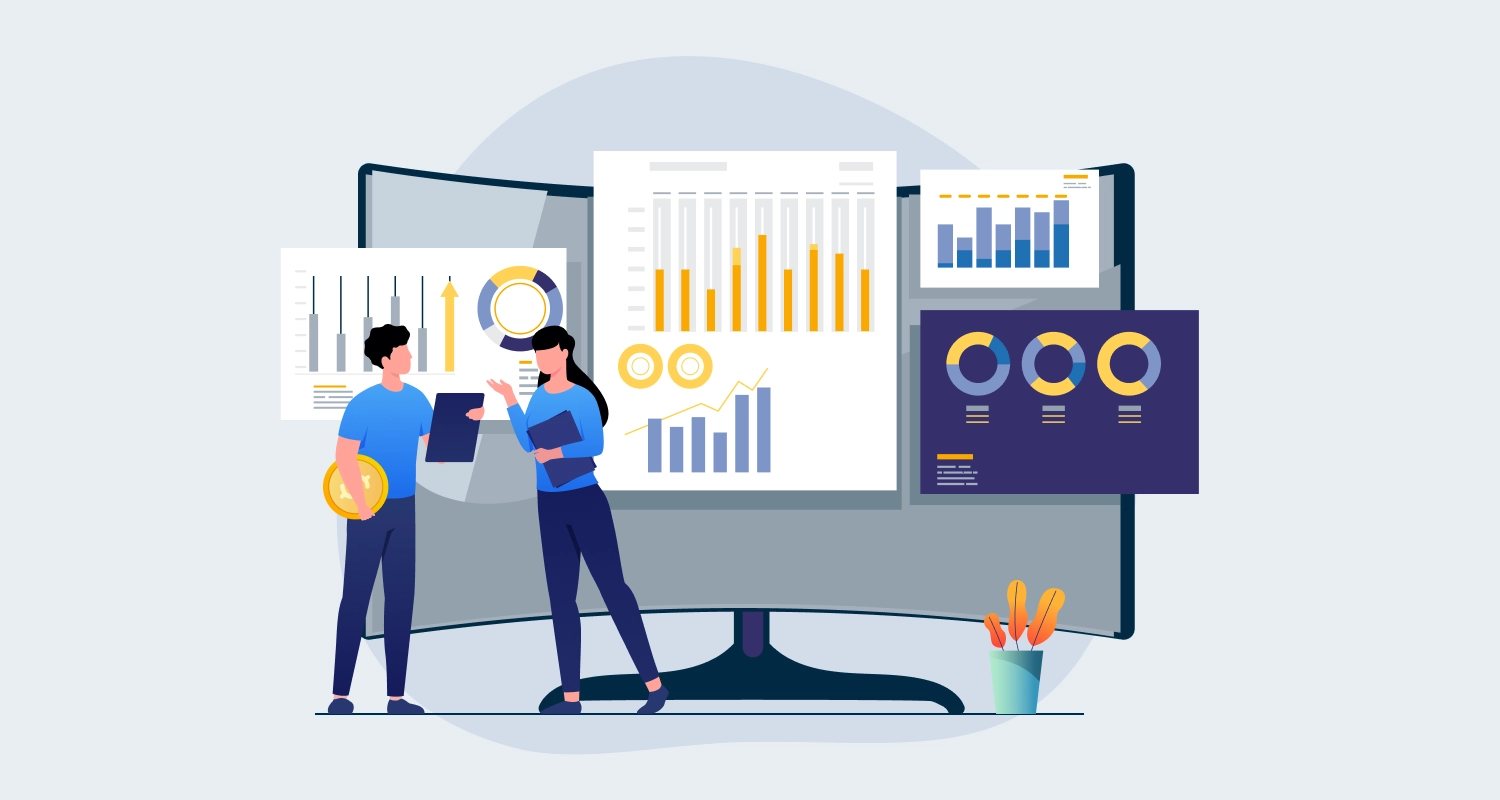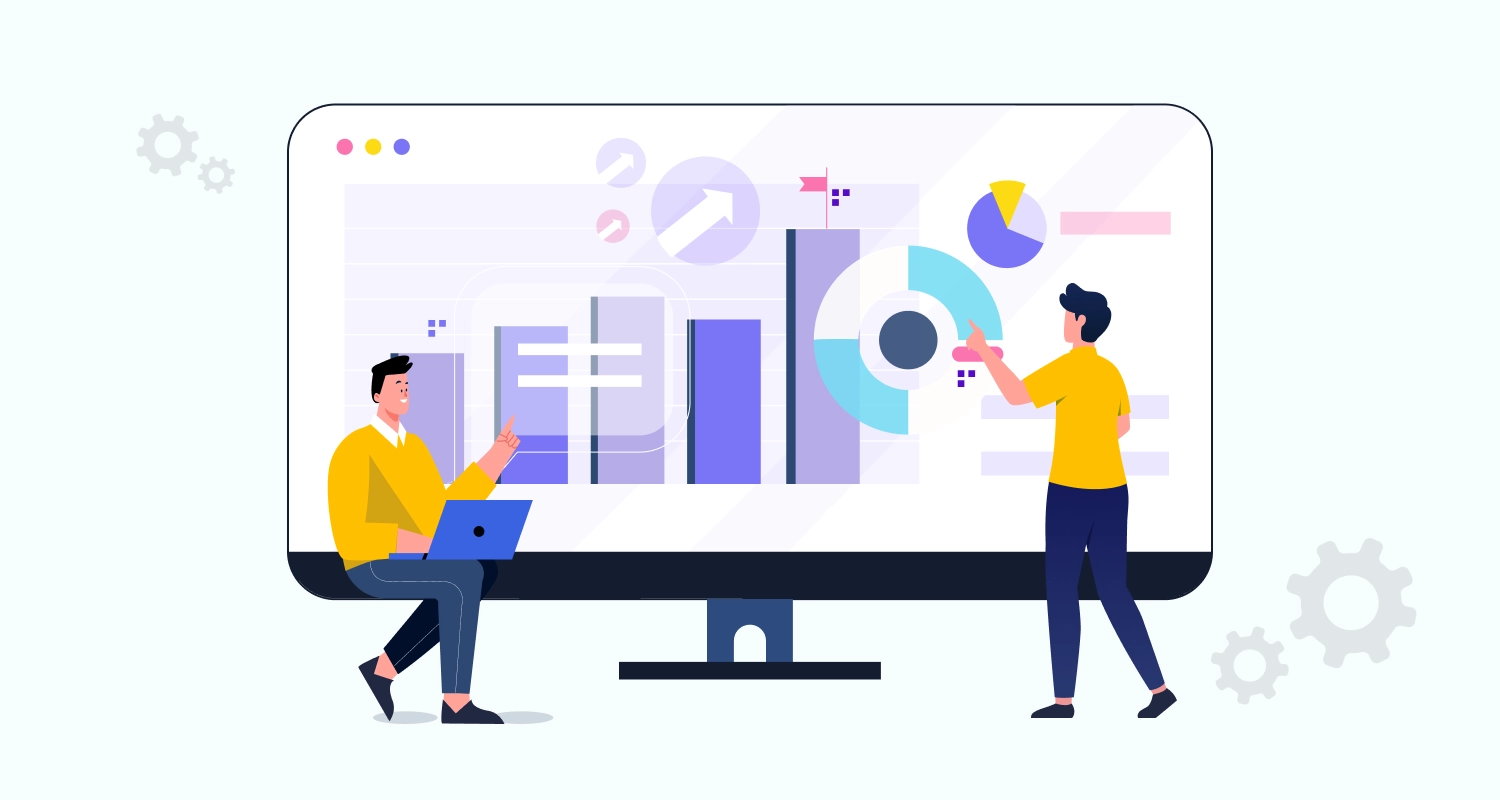Every company wants to stay ahead of the curve in the cutthroat world of business. For this reason, they use separate applications to do different tasks. Supply chain management, customer relationship management, business resource planning, and others are among the most often utilized applications.
It’s not simple to manage that many apps at once, though. It has drawbacks, such as the incapacity to exchange and communicate data efficiently. An enterprise app development company is the best answer to integrate applications and integrate data efficiently.
Businesses are becoming increasingly aware of the advantages and necessity of integrating their application. As a result, the global market for corporate application integration has reached USD 13.21 billion in 2023. Furthermore, by the end of 2028, it is expected to reach USD 27.33 billion.
Do you still run your business using several different systems? If so, it’s time to combine them and streamline processes to increase productivity and cut costs.
You will learn more about business application integration in this post. Now let’s get started!
What is Enterprise Application Integration?
A strategic method for connecting and integrating various, dissimilar software systems and applications inside an organization is called enterprise application integration, or EAI. It makes it possible to share and integrate processes, data, and resources among several enterprise web application development services. This facilitates the seamless integration of different cloud and on-premises apps to transform and use data for efficient operations.
The connected apps must integrate their data on the back end to provide seamless operation via a shared platform. Furthermore, with more data available, EAI facilitates the streamlining of procedures like customer relationship management, marketing, accounting, and billing. It contributes to the creation of a middleware framework that permits unrestricted data transfer across apps without materially altering the apps’ or databases’ original configurations.
7 Best Practices for Integrating Enterprise Applications
The following best practices are worthwhile implementing:
Sync up on Certain Goals
Knowing exactly what you want to get out of your integrations can help you make important decisions later on.
For example, in enterprise application integration, you can more easily decide which applications (like your CRM and marketing automation platform) need to be connected, what data needs to be synchronized, and which stakeholders (like GTM operations teams) need to be involved in the implementation process if your goal for a particular integration is to improve your sales reps’ lead response times.
Make Careful Decisions about What to Prioritize
Numerous integrations, if not hundreds, can be created by your team. You can examine anecdotal input from your clients and internal teams as well as integration adoption to make sure you’re concentrating on the best chances first.
When developing product integrations, for instance, you can accomplish all of the following:
To find out which integrations your clients and prospects are most interested in, survey sales and customer success. Better still, survey your clients and prospects directly. Examine the adoption of integration and look for patterns. You might want to think about including connections with comparable ticketing solutions if, for example, some ticketing integrations have adoption rates that are noticeably greater than those of other software categories.
Prioritizing them may be worthwhile if you’re trying to go upmarket, expand to a new area, or break into a new industry and you see that the businesses in these areas utilize particular applications.
Keep Thorough Records of Your Integrations
It can be challenging to remember the code you used to create each integration, how they are supposed to function, why a particular integration was created in the first place, etc. as you grow your integrations. If an integration breaks or has to be improved, your current team members as well as any future team members may be in grave danger if all of this background information on the integration is absent and the engineers in charge of building it go.
To put it briefly, your integrations should have a single, centralized source of truth that has all the necessary information.
Before Releasing an Integration into Production, Thoroughly Test It
It’s simple to overlook problems that could result in null values in the answers while organizing and executing API calls; this is especially likely to happen when a small team is coding the request and they have a tonne of other things on their plate.
Third-party API answers can also be unpredictable. For instance, your developers may anticipate receiving an API answer in a specific format, such as a string, but instead receive an integer or an array. Moreover, even though these differences might not seem like much, they have the potential to destroy your integrations.
You may carry out thorough API integration testing to stop any of the aforementioned scenarios—along with numerous others—from having an impact on your clients and internal teams.
Prioritise Security Controls
Whether it’s financial information about your company or personally identifying information, the data you’re synchronizing is probably sensitive.
You should implement several security measures to protect any sensitive data, including using HTTPS to encrypt data in transit, Oauth 2.0 authorization protocols to restrict access to specific data and actions to only those with the necessary authorization, detailed logs to monitor all API activity, and more.
Use Pre-made Connectors to Integrate Systems Internally
If you’re serious about connecting your internal apps with an API, you should give preference to those that provide extensive libraries of pre-built connectors.
These pre-built connectors make integration development easier and faster. In many situations, all it takes to access an application’s API endpoint in the tool is to enter your login credentials, such as the application’s client ID and client secret.
Lastly, these connectors should cover a variety of software categories and include long-tail apps that may be required by a small number of your clients in addition to commonly used solutions.
For Customer-Facing Integrations, Make Use of a Single API Platform
Your team will probably receive dozens of integration requests when you provide product integrations.
Meeting these criteria in-house or with a tool like an embedded iPaaS is tough, if not impossible; both ways involve significant technical expertise (an embedded iPaaS is, in most situations, not a “low-code/no-code” solution) and requires you to construct one integration at a time.
A unified API solution, in contrast, lets you access an entire category of integrations by simply building to a single API.

Consider the Right Approach to Integrate Enterprise Application
After you have established your objectives, the next crucial step is to choose the appropriate integration technology. Instead of using numerous ad hoc point-to-point solutions, use an Integration Platform that:
- Provides a one-stop shop for all of your integration requirements
- Offers quick and easy deployment choices
- Minimal need for IT support
- Provides increased agility and flexibility
- Encourages Functional Reusability
- Offers complete traceability between tools and artifacts
- Has a stand-alone Change Management system
- Provides interoperability within a loosely linked framework; Assists in orchestrating, as opposed to merely integrating, tools from other fields and technologies
- Produces individualized reports for observing integration success and failure visually
- Supports data transfer requirements in addition to linking and synchronization procedures
- Satisfies enterprise-class security requirements
- Easily supports plug-and-play mode insertion of new applications to your application ecosystem or future replacement of any application.
Enterprise Application Integration- Current Trends
The trends in EAI are expanding along with technology. The usage of cloud-based integration platforms, sometimes referred to as Integration Platforms as a Service (iPaaS), is one of the most obvious developments. These platforms offer numerous benefits, including the capacity to expand, lower costs, and the ability to manage intricate integration scenarios. They also facilitate real-time integration, which is essential in the fast-paced commercial environment of today.
Using enterprise application integration architecture for microservices is another trend. SaaS app development services and their software applications are designed using this strategy as a suite of services that can be separately deployed. The benefit is that it makes it simpler to scale and modify programs, which results in more adaptable and reliable corporate application integration.
Benefits of Enterprise Application Integration Software

Increased Accessibility and Visibility of Data
By combining data from multiple apps, EAI creates a single, cohesive view of the organization’s information. Decision-makers are empowered with real-time insights thanks to this centralized access to data, which makes strategic and well-informed decisions easier.
Streamlined Business Processes
EAI minimizes manual involvement and streamlines business processes by providing seamless connectivity across apps. Data synchronization and transfer automation reduce errors, speed up processes, and increase operational effectiveness.
Enhanced Customer Experience
Through the integration of data from several touchpoints, EAI enables a 360-degree perspective of customers. Personalized and prompt customer interactions are made possible by this holistic viewpoint, which boosts client loyalty and pleasure.
Enhanced Scalability and Flexibility
EAI solutions are made to expand and change in response to the demands of the business. EAI enables the smooth integration of new functionalities without interfering with current processes as the organization grows or integrates new apps.
Cost-Effectiveness
By eliminating the need for duplicate data entry and manual data handling, EAI maximizes resource utilization. Reduced operating costs and higher productivity are the results of this cost-effectiveness.
Create Unambiguous Communication Channels
A successful EAI depends on effective communication. Make sure that the integration approach, timeframe, and anticipated results are understood by all parties involved, including management, business units, and IT teams.
Data Mapping and Transformation
Different applications might employ various data structures and formats. Data mapping and transformation are essential steps in the integration process that guarantee data from one application can be interpreted and used by another. This task is made easier by using tools or middleware that has data transformation capabilities built in.
Develop a Plan for Data Governance and Data Quality
The significance of data governance and data quality is brought to light by centralized data integration. To guarantee data accuracy, consistency, and regulatory compliance, put data governance policies into place. Integrated data integrity is preserved through routine data quality checks and cleansing procedures.
Conclusion
Using these recommendations can significantly improve your EAI attempts. They guarantee that different apps run in unison, improving communication and data transfer inside your company. It not only breaks down data silos but also promotes informed decision-making and increases output.
These rules also help to avoid common mistakes, which saves time and other important resources.
If this guide was helpful to you and you are now ready to start your Application Integration journey, you can move on to the next step with CMARIX. Speak with specialists, make use of the appropriate technology, and-above all-start a conversation about the possibilities of business application integration inside your organization. Keep in mind that every lengthy journey begins with one step. Make this the first step you take to an integrated company.
Frequently Asked Questions
- 1. Which of the Following Is Performed by Enterprise Application Integration?
- 2. What Exactly Is the Goal of Enterprise Application Integration?
- 3. Why Is Enterprise Application Integration Important for Businesses?
- 4. What Are the Common Challenges in Enterprise Integration?
- 5. What Types of Integration Patterns Does EAI Support?







